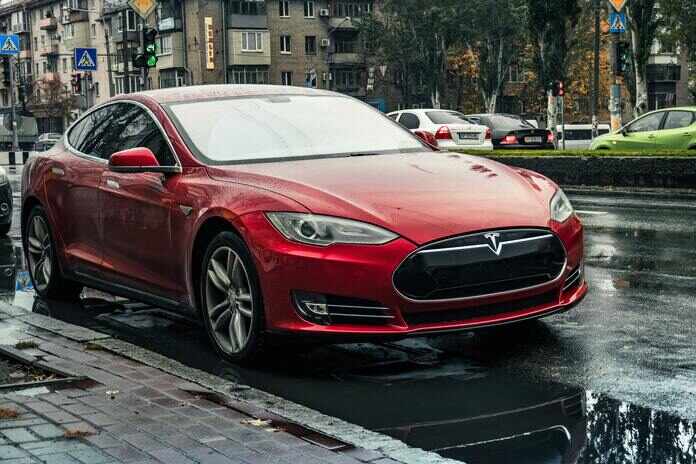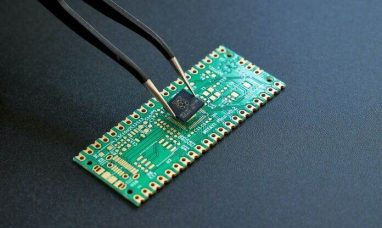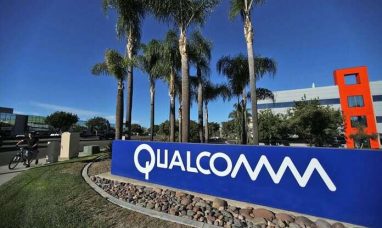Tesla Inc. (NASDAQ:TSLA)
During its recent Investor Day event, Tesla Inc. (NASDAQ:TSLA) stated that construction had begun on a lithium refinery to provide battery-grade lithium compounds for its North American operations. Notwithstanding my optimism for the firm and its shareholders, I disagree with the prevailing narrative about what may be the limiting factor for lithium. This article takes a look at Tesla’s statements on lithium. It provides some of the author’s own ideas on the topic.
A more cheap Tesla electric vehicle (“EV”) was a topic of discussion in a previous piece I wrote on the implications for Tesla’s rivals. I projected that Tesla would reveal this car during its Investor Day presentation, but they did not. This refinery, though, may bring the reveal closer. Moreover, as I will explain in this piece, it might enable the corporation to lower the prices of its already inexpensive automobiles.
Lithium Remarks by Tesla
Starting with Tesla’s 2020 Battery Day event, Elon Musk has consistently played down the severity of the lithium shortage. Around the 2:22:00 point, Musk compares lithium to oil, saying neither is uncommon and can be found almost anywhere. Notwithstanding its veracity, this remark glosses over several challenges of lithium extraction.
To begin, putting a mine into production after its discovery is lengthy. To put a lithium project into production typically takes at least seven years, as seen in the graphic below. So, the fact that we discovered it does not guarantee that it will be extracted in the near future.
Batteries account for 60% of lithium consumption, but McKinsey predicts that number will rise to 95% by 2030. In contrast to nickel, the demand for lithium from EVs significantly impacts the market. Because Model 3 manufacturing began in the second half of 2017 (less than six years ago), the industry has needed more time to prepare for this rapid expansion.
In other words, if a mining business had started constructing a lithium project while the first Model 3s were rolling off the assembly line, it would still need to be in production.
Musk continues by saying the United States has enough lithium for 300 million electric vehicles. It’s also true that this is theoretically correct but only partially accurate in practice.
In 2022, the United States had a reserve of 750,000 tonnes of lithium (3.992 million tonnes LCE). It implies just enough lithium in the United States to power around 100 million EVs if extracted at a cost. While most lithium projects only recover about 80% of the reserve quantity, this calculation is based on the assumption that all of the resources are extracted. It’s also important to remember that when this was claimed, the United States’ lithium reserves would have only been enough to charge 84 million electric vehicles.
For Elon Musk’s 300 million EV prediction, he factored in the country’s lithium reserves. Resources, in contrast to reserves, might comprise economically unfeasible minerals. In light of Musk’s prior observation, it is crucial to distinguish between resources and reserves when discussing the abundance of lithium.
Although lithium may be discovered somewhat often, it is rare in commercially viable proportions. It is only sometimes the case that a considerable resource will have a correspondingly large reserve. A typical reserve for a lithium project is predicted to be about 22 percent of the resource. However, this figure may vary widely.
Yet, one problem that Musk keeps bringing up is the need to refine capacity in the lithium business. Musk remarked in the Q2 2022 earnings call for Tesla:
I want to reiterate my previous call for new company owners to join the lithium refining industry. In this case, mining is simple. Refining is a very challenging process. As a result, lithium is ubiquitous, appearing in abundance (or at least being present) in many forms worldwide. Nevertheless, lithium must be refined into battery-grade lithium carbonate and hydroxide. That means it’s as easy as printing money right now. Currently, the margins in lithium processing are comparable to those in software development. This is why it is important to reiterate my call for entrepreneurs to join the lithium refining industry. There is no way to lose. It’s authorized to create currency.
Musk discussed this issue once again at the most recent Investor Day. Reiterating his earlier claims that the United States had sufficient lithium to electrify the planet (at about the 55-minute mark), he said, “the limiting issue is the refining of lithium into battery-grade hydroxide or carbonate.” Around the 3.5-hour mark, he reaffirmed this, saying that the refining process is the “choke point” for lithium.
The Truth
The current state of the market disproves the hypothesis that lithium demand is refinery-limited. The cost of spodumene concentrate (used to make lithium-ion batteries) on the open market indicates this. Good examples may be found in Pilbara Mining (OTCPK:PILBF).
The last time Pilbara Minerals held an auction for spodumene, they received $8,299 per ton for its 6% spodumene concentrate. Although this is the spot market price, it is usually higher than the contract price; nonetheless, the business subsequently declared that its key clients would be paying $6,300 per tonne beginning in December.
The business has just implemented a new spodumene pricing technique, which is important given the contract cost of $6,300 per tonne. Pilbara will collect the value of the lithium hydroxide sold by its client, minus an agreed amount for conversion and other expenses, using a pricing method it calls lithium hydroxide tolling.
I can’t think of a better way to read this than as a strong hint that mining for lithium ores is significantly more profitable than processing them.
We can see the margins at play here by examining the company’s $6,300 per tonne sales price. In the second half of the year, Pilbara’s all-in sales and operating costs were reported to be $1,136 per tonne, with royalties accounting for a significant amount. Plant operating costs were $595 per tonne before royalties and transportation expenses were added.
An EBITDA margin of 77.3% and a mine-level profit margin of 88.1% are implied by Pilbara’s average realized sales price of $4,493 per tonne for the second half of the year. Let’s look at some numbers from Allkem to get a feel for how much of a profit a pure lithium refiner may make.
Compared to its competitors, Allkem performed a fantastic job maximizing the value of its lithium output, selling its lithium carbonate for an average of $48,125 per tonne in the second half of 2022. (September Quarter, December Quarter). Lithium hydroxide sold by a similarly successful firm would fetch a price of $49,625 per tonne, a $1,500 premium above the price of hydroxide. Please take into account that these prices are for contractual purposes only.
The amount of spodumene concentrate required to create one tonne of lithium hydroxide is 7.5 tonnes. Hence, the cost of raw materials at $37,448 per tonne is implied by the Pilbara price ($4,993/tonne). Adding the price of $2,500 per ton to produce hydroxide from spodumene raises the total production cost to $40,000.
To sum up, we have a net profit margin of 19.4 percent. Of course, it’s not horrible, but it’s also not the “software margins” that Elon Musk often brags about. Also, if the sector were genuinely refining-constrained, refineries would have a far more considerable margin than ore producers. Yet, the inverse is, in fact, true.
Tesla’s gain
Don’t get me wrong, this doesn’t imply that Elon Musk and Tesla are wrong to see the need for more lithium refining capacity. Spodumene processing is presently dominated by China, with the first plants outside China attempting to scale up output in Australia. For instance, the Kwinana lithium refinery completed construction in 2019 but still needs to produce lithium hydroxide at total capacity.
By expanding its refining operations in North America, Tesla stock could avoid the significant geopolitical risk provided by China, ensuring a steady supply of lithium for its cars. Having a market outside of China benefits Australia’s spodumene manufacturers in more ways than one.
A minimum of 40 percent of the critical materials in an electric vehicle’s battery must be sourced from the United States or a country with which it has a free trade agreement for the vehicle to qualify for the first $5,000 of the $7,500 tax credit under the new rules established by the Inflation Reduction Act. In 2024, it will be 50%, in 2025, 60%; and in 2026, and by 2027 it will be 80%.
The United States and Australia have a free trade agreement, but China does not. Notwithstanding a free trade agreement, Australia’s lithium is now processed in China, meaning that almost 55 percent of the world’s lithium supply is ineligible for these tax incentives. To take advantage of the federal tax incentives, Tesla has to import its lithium from Australia and refine it in the United States. This will enable the company to lower the price of their vehicles without really lowering their selling prices.
Additionally, although a 19% margin isn’t as impressive as the 77% margin that miners may get, it’s still a respectable figure. Avoiding the refiner premium will allow Tesla to put more effort into the EV price fight and maintain its lead.
In my previous piece on Tesla, I said that the company was working on a more budget-friendly electric vehicle. Tesla can manufacture a more economically viable electric vehicle (EV) if it can control its supply chain and manufacturing costs. But, although I agree that this is an intelligent business decision, I do not agree with the corporation’s tone in communicating it.
Insight for the Investor
The data doesn’t tell a fib. Again, I agree that investing in lithium refining capacity outside of China is crucial, but downplaying the need for mining expansions restricts public investments in lithium miners.
After Tesla’s Investor Day, most lithium firms’ shares dropped from 1.5% to 5%, with several falling by over 5%. Because of the lengthy timeline required for projects to achieve commercial production, the future lithium supply is at risk if investments are made later. Thus, Tesla should support rather than hinder these mining operations.
That said, the opening of Tesla’s lithium refinery is excellent news for investors. The firm will be able to assure its supply, increase profits, and satisfy requirements for tax credits on domestic car manufacture. This will give the Tesla stock a further edge as it continues to fight for lower prices for electric vehicles.
Featured Image: Pexels @ Yehor Andrukhovych









